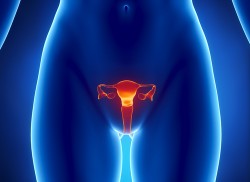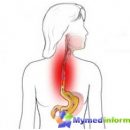How to select gaskets on such days? How to dispose of used gaskets to not deliver inconvenience to others?
Content
Menstrual hygiene
The choice of external means of menstrual hygiene is determined by the ability to absorb and hold a large number of menstrual fluid inside the gasket, its reliable fixation on underwear, as well as convenience of use, compactness, reliability, comfort, to ensure the possibility of carrying any clothes and conduct a familiar way of life from the day of the period. The presence of all these characteristics in the laying provides a woman physical and psychological comfort.
 Currently, manufacturers of hygienic gaskets offer a huge variety of products: gaskets of conventional thickness and ullatonic options, classic form of form and elongated models with «wings».
Currently, manufacturers of hygienic gaskets offer a huge variety of products: gaskets of conventional thickness and ullatonic options, classic form of form and elongated models with «wings».
Despite the fact that so far many women continue to use traditional «Thick» Gaskets, more and more girls and women prefer ultra-thin gaskets created using new technologies. Along with the same high degree of protection and reliability, ultra-thin gaskets are more imperceptible and comfortable.
In order to ensure more reliable protection of linen at the edges with any movements, a unique technology of elongated elastic «Wings».
The frequency of changing gaskets for gynecological health mainly depends on the nature of the discharges falling on the gasket, their number and ability of the gasket to absorb and hold them. Long-term contact of skin discharge can lead in its high humidity, increase sensitivity, mechanical, physical (humidity and temperature), chemical and microbial factors, which increases the likelihood of irritation. Therefore, it is very important to change the gaskets on time as needed, but at least 4-6 times a day.
Gaskets can not be thrown into the sewer. Preposed Packaging from the following laying or to toilet paper, used gaskets are utilized as solid household waste.
Daily pads
Special place in women's hygiene is given to laying for every day. Pasters for every day exist for more than 20 years. During this time, they were constantly improved to meet the needs of consumers, such as preserving the purity of linen, absorbability, comfort, the control of the appearance of odors and others.
Sociological studies show that the gaskets for every day use women aged 12-65 years. The most widely of their use is celebrated at the age of 25-44. For modern women, the gasket for every day today becomes an integral toilet product, and its use is a natural part of daily care, such as teeth cleaning, hair styling, using perfumery and cosmetics. The average duration of using one gasket for every day is 4.7 hours.
Gaskets for every day are often used in the intermenstrual period, but can be applied during menstruation. In all age groups, the use of gaskets for every day in the period between menstruation.
Women using pads for every day during menstruation usually prefer to combine the use of Inravaginal tampons, gaskets and gaskets for every day for better protection. In addition, in the first and last days of menstruation, a minor part of women prefers to use gaskets for every day as a means of menstrual hygiene.
Most women begins to use gaskets for every day to prevent the appearance of unpleasant odor and to maintain the feeling of cleanliness and freshness.
According to the study of consumers conducted by the Proctor EAN Gamble in 1998, 66.84% of women of 12-65 - summer age ever experienced the availability of natural vaginal discharge. Incoming urination was noted in 18-57% of women of the same age.
Discovers from the diarmity or losses of the perineum ever experienced 32-58% of women, while the problem of unpleasant smell was relevant for 48-67% of women who participated in the study.
The number of girls and women experiencing discomfort from the dies of the perineum and unpleasant odor, slightly increases from age 12 to 25 years and remains relatively stable after 25 years.
Women preferring open underwear can use gaskets for every day specially designed for such purposes.









